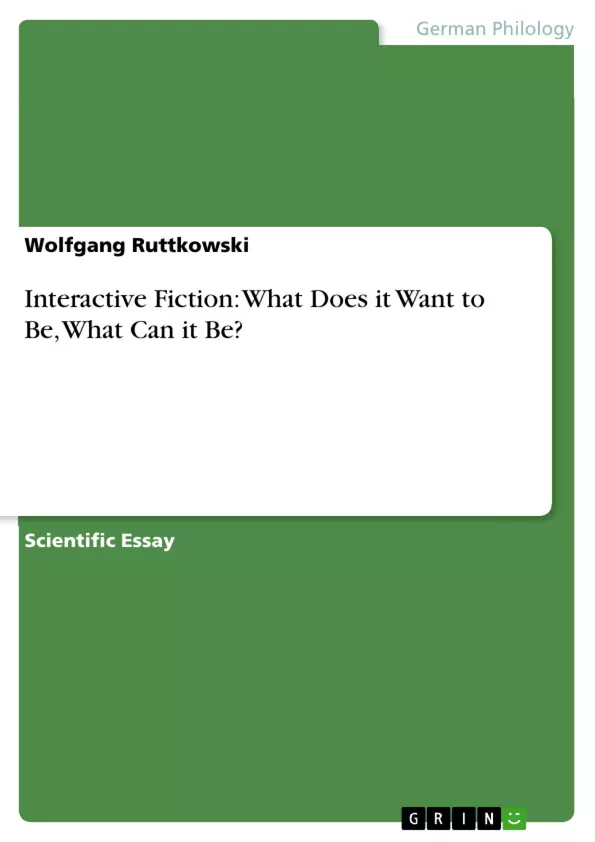We see that in interactive literature, the danger lies less in interactivity as such, but rather in the simultaneity of heterogeneous input it allows. As “strata-poetics” has taught us our reading experience is always an intensely interactive one. We contribute more to it than we aware of. More precisely: the characteristic experience of literature (especially of poesy) is not possible without intense interactivity between author and reader. It is the simultaneity of various heterogeneous and often contradictory reader-contributions, not inspired by the work itself but by the willfulness of the “readers”, which cast the “Internet Story” in doubt as a valid literary genre.
Inhaltsverzeichnis (Table of Contents)
- Introduction
- Precursors
- First Attempts at Defining Interactive Novels
Zielsetzung und Themenschwerpunkte (Objectives and Key Themes)
This paper aims to explore the emerging genre of interactive fiction, examining its potential and limitations. It investigates the relationship between interactive fiction and other forms of hypermedia, and explores how this new genre challenges traditional notions of authorship, narrative structure, and reader engagement.
- Interactive fiction as a new literary form
- The relationship between interactive fiction and other forms of hypermedia
- The role of the reader in shaping the narrative
- The impact of interactive fiction on traditional narrative structures
- The potential and limitations of interactive fiction as a literary medium
Zusammenfassung der Kapitel (Chapter Summaries)
- Introduction: This chapter introduces the concept of interactive fiction and its relationship to hypermedia, differentiating between internet stories and interactive novels. It highlights the potential for interactive fiction to redefine traditional notions of authorship and reader engagement.
- Precursors: This chapter examines various examples from film, theatre, and literature that demonstrate early instances of choice and alternative narratives, demonstrating that the concept of interactive fiction is not entirely new.
- First Attempts at Defining Interactive Novels: This chapter analyzes key characteristics of interactive fiction, highlighting its unique features such as its reliance on computers, its non-linear reading experience, and its potential for incorporating other media. It also discusses the implications of these features for traditional narrative structures and reader engagement.
Schlüsselwörter (Keywords)
Key concepts explored in this work include interactive fiction, hyperfiction, hypermedia, narrative structure, reader engagement, authorship, non-linearity, and the impact of technology on literature.
- Arbeit zitieren
- Dr. Wolfgang Ruttkowski (Autor:in), 1997, Interactive Fiction: What Does it Want to Be, What Can it Be?, München, GRIN Verlag, https://www.grin.com/document/7574



